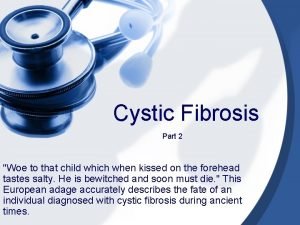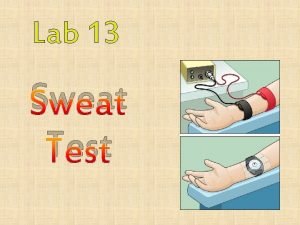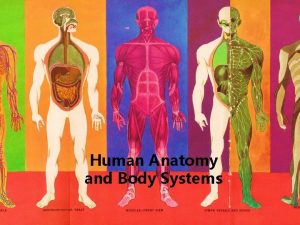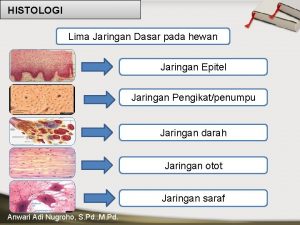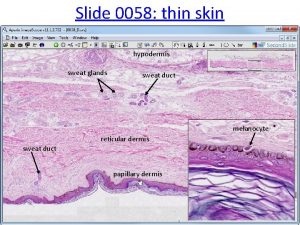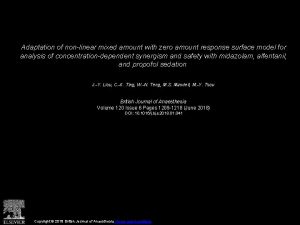Sweat Test A sweat test measures the amount




















- Slides: 20

Sweat Test

• A sweat test measures the amount of salt chemicals (sodium and chloride) in sweat. • Sodium and chloride are part of your body’s electrolyte balance, and combine to form the salt found in sweat. • They help regulate the fluid balance in your tissues. It is done to help diagnose cystic fibrosis. • Cystic fibrosis is an inherited disease that exhibits a variety of symptoms and conditions, including abnormal secretion of sweat. • The sweat test is not very reliable during the first few weeks of life or after puberty.

Indications for the sweat test include • A family history of cystic fibrosis, • Recurrent respiratory tract infections, • Malabsorption syndromes,

Cystic fibrosis • Cystic fibrosis is a hereditary disease (is caused by a mutation in each of the two copies of the CFTR gene) the CFTR protein may be dysfunctional or totally absent. OR • Cystic fibrosis is caused by defects in a protein found in many tissues, including the airways and the sweat glands. As a result, these tissues do not work properly. • The mucous glands produce very thick mucus, which is especially problematic in the lungs. • There is also malfunctioning of the pancreatic exocrine gland. • Normally, sweat on the skin surface contains very little sodium and chloride. People with cystic fibrosis (CF) have 2 to 5 times the normal amount of sodium and chloride in their sweat.



characterized by • Increased concentration of electrolytes especially Na and CL, in secretion of other gland notably (sweat glands, Parotid salivary glands. . ) • Increased viscosity of mucous secretions, including those of (pancreas, intestinal glands, tracheal, peritracheal, bronchial) ü Thick mucus production, as well as a less competent immune system, cause mucus to build up and clog (obstruction) some of the organs in the body, particularly in the lungs and pancreas. When mucus clogs the lungs, it can make breathing very difficult. The thick mucus also causes bacteria to get stuck in the airways, which causes inflammation (or swelling) and infections that leads to lung damage.

• Mucus also can block the digestive tract and pancreas. The mucus stops digestive enzymes from getting to the intestines. The body needs these enzymes to break down food, which provides important nutrients to help us grow and stay healthy. • Infertility: Infertility affects both men and women. At least 97% of men with cystic fibrosis are infertile, but not sterile and can have children with assisted reproductive techniques. • The main cause of infertility in men with cystic fibrosis is congenital absence of the vas deferens, but potentially also by other mechanisms such as causing – azoospermia, teratospermia and oligoasthenospermia


Symptoms of cystic fibrosis (CF) • • • Thick, viscous mucus secretions in the lungs Repeated infections Recurrent pneumonia Chronic cough, shortness of breath Wheezing Bronchitis and chronic sinusitis Asthma Weight loss and excessive salt in sweat, dehydration Abdominal pain and fatigue Changes in color and amount of sputum


Sweat analysis • Two methods of sweat analysis are most frequently used: chloride concentration and conductivity measurement. ü The sweat chloride analysis is recommended as the diagnostic test for CF. ü Sweat conductivity may be used to screen for CF. • No special preparation is needed before having this test. Your child may eat, drink, and exercise normally before the test. If your child takes any medicines, he or she may take them on the usual schedule.

Sample collection • Earlier methods to stimulate the production of sweat including the use of humid high temperature room, and encasing the pts. • Current methods: A tiny amount of a sweat-stimulating liquid is applied to a small patch of skin on the arm or leg. An electrode is then placed over the site and a weak electrical current stimulates the area. This is a painless procedure that may create a tingling or warm sensation. After several minutes, the area is cleaned and sweat is collected for about thirty minutes, either into a plastic coil of tubing or onto a piece of gauze or filter paper. The sweat obtained is then analyzed.

Normal Values • Sodium üNormal: <70 m. Eq/L üBorderline : 70– 90 m. Eq/L üAbnormal: >90 m. Eq/L • Chloride üNormal: <50 m. Eq/L üBorderline : 50– 60 m. Eq/L üAbnormal: >60 m. Eq/L

• A positive sweat chloride test indicates that there is a good chance that the person has CF. • Positive sweat chloride tests should be repeated for verification and confirmed, wherever possible, by CF gene mutation panel testing. • The sweat test may not always be useful in newborns. They may not produce enough sweat for a reliable diagnosis, so the test may have to wait until the baby is several weeks old.

Sources of error • • Technical errors. Insufficient sample, evaporation. Contamination, dehydration. Skin rash on the tested area may produce incorrect results.

Possible Meanings of Abnormal Values Increased Decreased • • Hypoaldosteronis • Sodium depletion Addison’s disease Adrenal insufficiency Cystic fibrosis Diabetes insipidus Hypothyroidism Malnutrition Renal failure

Treatments and drugs • There is no cure for cystic fibrosis, but treatment can ease symptoms and reduce complications. Close monitoring and early. The goals of treatment include: • Preventing and controlling lung infections • Loosening and removing mucus from the lungs • Preventing and treating intestinal blockage • Providing adequate nutrition

Medications • Antibiotics to treat and prevent lung infections. • Mucus-thinning drugs to help you cough up the mucus, which improves lung function. • Bronchodilators to help keep your airways open by relaxing the muscles around your bronchial tubes • Oral pancreatic enzymes to help your digestive tract absorb nutrients

What To Think About • Usually, two sweat tests are done to confirm a diagnosis of cystic fibrosis. • A sweat test can't identify carriers of the cystic fibrosis gene. • Adults generally have higher salt concentrations in their sweat than children. Also, sweat test results in adults can vary widely. This is especially true in women, because the amount of salt in their sweat can vary with the phase of their menstrual cycle. • Enough sweat must be collected to get accurate test results.
 Sweat test results
Sweat test results Sweat chloride test
Sweat chloride test Anova repeated measures
Anova repeated measures Duct of merocrine sweat gland
Duct of merocrine sweat gland Mammary gland merocrine
Mammary gland merocrine Eeg sweat artifact
Eeg sweat artifact Duct of merocrine sweat gland
Duct of merocrine sweat gland Mc ardle’s maximum allowable sweat rate is
Mc ardle’s maximum allowable sweat rate is Nay definition shakespeare
Nay definition shakespeare Jesus sweat blood
Jesus sweat blood Sioux rituals
Sioux rituals Cat kenning poem
Cat kenning poem Sweat system
Sweat system Nay but to live in the rank sweat
Nay but to live in the rank sweat Keith sweat twisted mp3
Keith sweat twisted mp3 Human scalp
Human scalp Sweat gland adalah
Sweat gland adalah What are sweat equity shares
What are sweat equity shares Simple present tense 用法
Simple present tense 用法 Hát kết hợp bộ gõ cơ thể
Hát kết hợp bộ gõ cơ thể Frameset trong html5
Frameset trong html5
